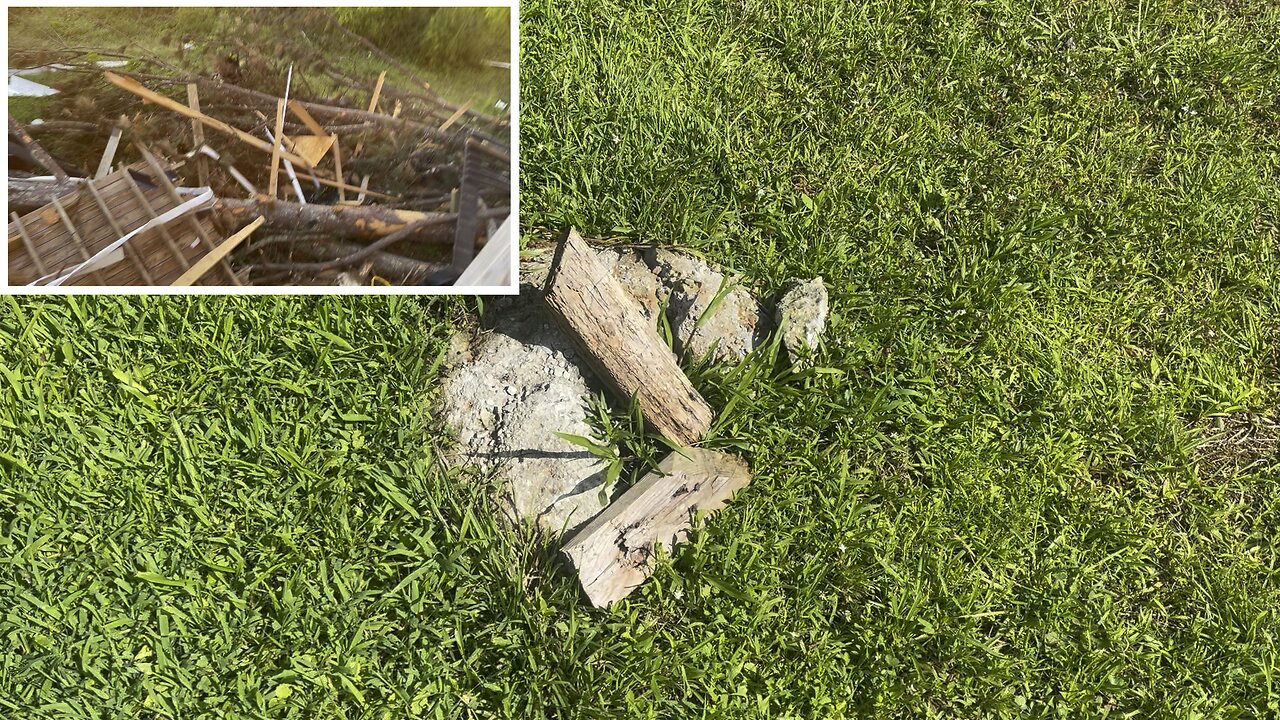Premium Only Content

Rotary hammer drill as jackhammer DCH133 DeWALT PowerStack XR battery Bosch SDS Plus point chisel
This is my first time using a true rotary hammer since my PowerDetect XR hammer drill wouldn’t cut it. The DeWALT DCH133 cordless rotary hammer is a long boy with a D-handle but it brings more power than their comparable XR tools, which sacrifice some power for comfort (shock-absorbing mechanism). Heck, it really is an XR tool: They still call it “XR” on listings, descriptions, and shelf tags and in other regions it’s still badged XR on the tool itself.
I bought my DCD998 hammer drill for almost 3x as much when I needed to anchor a motorcycle tire changed to the concrete garage floor. It turns out the DCH133 was a much better tool for that too.
The difference:
Though rotary hammers can drill, they are really mini jackhammers that hammer forward but can also rotate the bit to avoid repeatedly hammering the exact same spot. The rotation is useful for making clean holes in masonry or stone but most offer hammer-only modes for demolition, chiseling, removing tile, etc. The special bit, typically SDS Plus or SDS Max, is allowed to move forward/back while in the chuck so that the piston hammering on the back can push the bit into to the material being drilled/hammered.
Hammer drills always turn because they are drills, first and foremost… meant for drilling holes, turning fasteners, and driving screws. You can’t turn off rotation and use hammer-only but you can turn off the hammering. There is no piston hitting the back so the hammering force is generated in the clutch. The bit can’t move forward in the chuck so there is no jackhammering like SDS has.
Drilling holes in concrete, bricks, cement, ceramic, etc is really about controlled micro-chipping. A masonry drill bit has a wide blade at the tip and turns to offset for another hammer strike. The blade doesn’t cut. Instead, it makes chips when the hammer strikes. It wouldn’t make progress if it just kept chipping the same part of the hole. If anything, you’d just be driving in a wedge that cracks the whole thing.
The spiral flutes just help the chips find their way out while turning. A masonry bit does not cut into the concrete and pull itself through like a screw. It mostly turns to avoid repeatedly striking the same place, but you may not be drilling holes. You may WANT to repeatedly strike the same place, which is why most rotary hammers offer a hammer-only mode. That’s what I did here.
I’m kicking myself for not buying one of these a long time ago. I just used it again to move the tire changer to a better spot in the garage. It really is true that you will use it more than you realize.
What’s next? I’ll be getting a SDS Plus arbor and “core bit” so I can make even larger holes through cinder block. You might do this for a dryer vent or plumbing but I’m doing it to make an electrical outlet for an EVSE. That’s the thing you plug an electric vehicle into for charging off mains power. It’s technically a smart extension cable since the charger is built into the car. Yeah, that’s not the kind of thing a hammer drill can do.
The battery I used is DeWALT DCBP520 5AH PowerStack. It’s being rebadged as “PowerStack XR” so I got their best battery on clearance for a third of its MSRP.
The SDS Plus bit I used is Bosch Bulldog HS1415 10” point chisel. I like that a point chisel often splits in multiple directions when I’m breaking up concrete where a flat chisel likely wouldn’t. The extra flutes on the Bulldog Xtreme “Viper” HS1470 presumably give it more fracturing points but only once it pushes itself deep enough. I got all of them for $1 each new-old stock at the flea market along with stubby and wide chisel bits.
I haven’t used the DeWALT DWAF5470 SDS Plus rock carbide drill bits yet. They were under $16 on sale from Amazon but returned to almost $24. I assume “rock” is harder than masonry so perhaps I can use them on both.
-
 25:49
25:49
GritsGG
12 hours agoRank 1 Player Crushes Solo Lobby!
19.1K3 -
 LIVE
LIVE
Wahzdee
58 minutes ago🔥 Trying to Find The One Extraction Game – Be Honest, Are These Fun to Watch?
19 watching -
 35:14
35:14
The Pascal Show
13 hours ago $3.66 earnedHE'S GONNA SUE COLDPLAY?! Astronomer HR Resigns & Ex-CEO Set To Sue Coldplay Over Kiss Cam Drama
18.1K7 -
 LIVE
LIVE
Lofi Girl
2 years agoSynthwave Radio 🌌 - beats to chill/game to
429 watching -
 19:18
19:18
DeVory Darkins
9 hours ago $26.54 earnedDemocrat non-profit SCAM EXPOSED as Trump OBLITERATES Newsom
49.3K96 -
 23:58
23:58
Stephen Gardner
11 hours ago🔥Obama THROWS Adam Schiff under the bus to obstruct Trump!
40.3K145 -
 38:44
38:44
The Why Files
5 days agoProject Ancient Arrow | The NSA's Secret War Against Our Future
77.5K82 -
 2:36:06
2:36:06
Barry Cunningham
13 hours agoPRESIDENT TRUMP IS TRULY USHERING IN THE GOLDEN AGE OF AMERICA! CAN YOU FEEL IT?
127K53 -
 3:47:25
3:47:25
SynthTrax & DJ Cheezus Livestreams
3 days agoFriday Night Synthwave 80s 90s Electronica and more DJ MIX Livestream 2K Celebration SPECIAL EDITION 530pm PST / 830pm EST
63.3K8 -
 2:21:54
2:21:54
VapinGamers
9 hours ago $4.34 earnedDestiny 2 - Edge of Fate Legendary Run Part 3 - !rumbot !music
35.8K